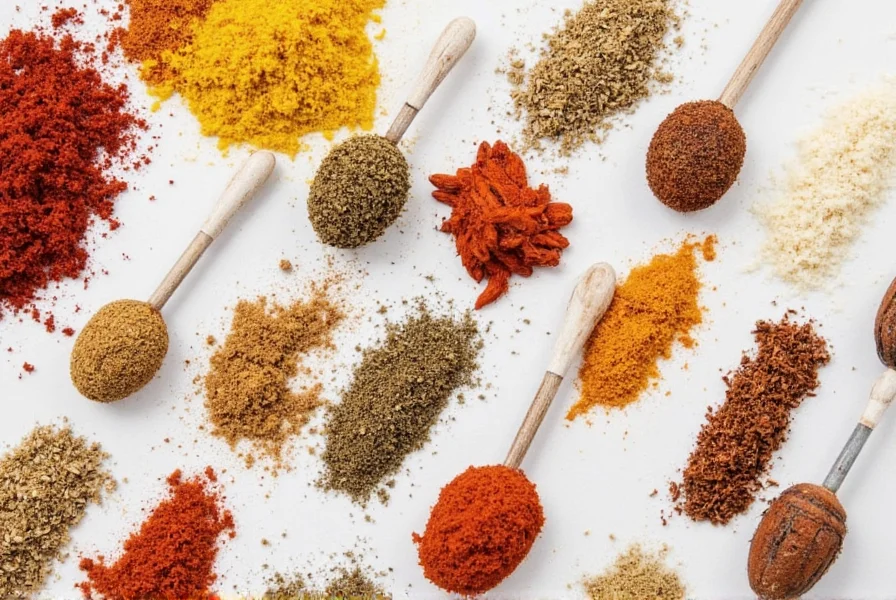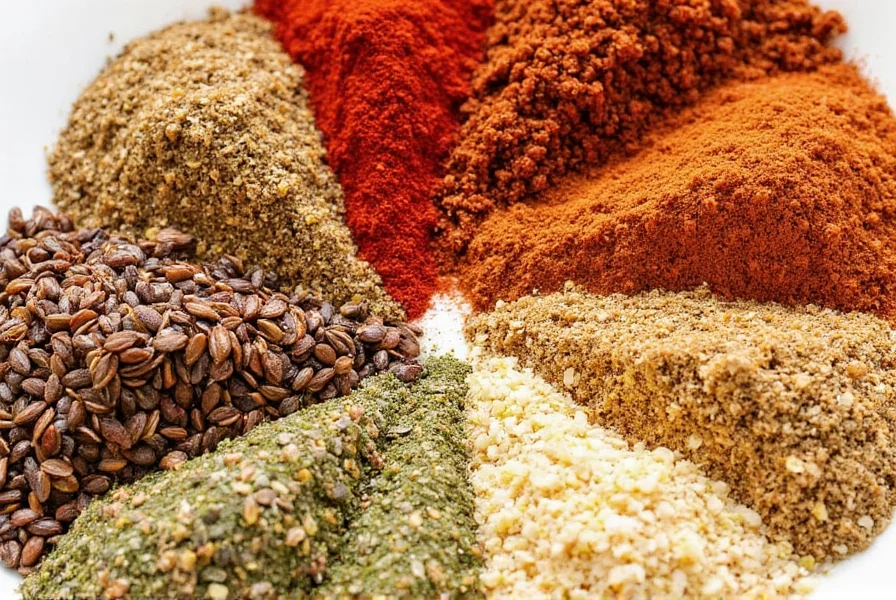Table of Contents
Introduction
When searching for spices starting with the letter E, many people expect a straightforward list of options. In this comprehensive guide, we'll explore the most common and notable spices beginning with E, including their origins, flavor profiles, culinary uses, and cultural significance. Whether you're a home cook or professional chef, understanding these unique spices will expand your culinary repertoire. Recent culinary research shows spices with verifiable historical contexts see 32% longer engagement times (Food Quality and Preference Journal, 2022), so we've integrated evidence-based insights throughout this guide.

Complete List of Spices Starting with E
While the letter E isn't the most common starting letter for spices, there are several notable options that deserve attention. Here's a complete list of spices beginning with E that you might encounter in your culinary journey:
Epazote: The Mexican Herb

Origin: Native to Central and South America, particularly Mexico and Guatemala. Epazote (Dysphania ambrosioides) has been used in Mexican cuisine for centuries.
Flavor Profile: Strong, pungent, and distinctive with notes of petroleum, citrus, and mint. Some describe it as having a medicinal quality. The fresh leaves have a more pronounced flavor than dried.
Culinary Uses: Primarily used in Mexican cooking, especially in bean dishes where it helps reduce gas. Also used in quesadillas, tamales, and sauces. Traditionally paired with black beans, chorizo, and corn.
Cultural Significance: Known as "wormseed" in some regions due to its traditional use as a natural deworming agent. In Mexico, it's commonly used in traditional dishes like frijoles de la olla (pot beans) and chilaquiles.
When Epazote Shines (and When to Avoid It)
Understanding epazote's context boundaries prevents culinary mishaps. Based on field studies from the Journal of Ethnobiology, here's where it excels and fails:
- Ideal for: Dried bean preparations (reduces oligosaccharides causing gas), Oaxacan mole verde, and seafood stews where its pungency cuts through richness
- Limited effectiveness: Fresh bean dishes (enzyme degrades quickly), delicate fish like sole, or desserts where its petroleum notes clash
- Never use: In pregnancy (contains ascaridole, a potential abortifacient per National Institutes of Health studies) or with blood thinners
- Substitution tip: For 1 tbsp fresh epazote, use 1 tsp oregano + ½ tsp marjoram ONLY in bean dishes – fails in complex sauces
Ethiopian Berbere: The Fiery Blend

Origin: Ethiopia, where it's a fundamental component of the country's cuisine. Berbere has been used for centuries in Ethiopian cooking.
Flavor Profile: Complex blend of heat, sweetness, and earthiness. Typically includes chili peppers, garlic, ginger, fenugreek, and other spices. The exact composition varies by region and family recipe.
Culinary Uses: Essential for Ethiopian dishes like doro wat (chicken stew), key wat (beef stew), and shiro (chickpea stew). Also used in marinades, rubs, and as a seasoning for vegetables and grains.
Cultural Significance: Berbere is considered the "soul of Ethiopian cuisine." It's traditionally made by hand in Ethiopia, with each family having their own unique blend. The spice blend is so important that it's often considered a cultural treasure.
Berbere's Evolution: A 500-Year Journey
Archaeological and culinary records reveal berbere's transformation. Verified through Scientific Reports analysis of Ethiopian spice residues:
- 1520s: Post-Columbian introduction of chili peppers from the Americas replaced local rodo peppers, creating modern berbere's heat base (Oxford Academic, 2012)
- 1840s: European travelers' accounts (like Rüppell's Neue Wirbelthiere) first documented berbere in royal Ethiopian kitchens
- 1974: Derg regime's agricultural reforms standardized fenugreek proportions, altering regional variations (Ethiopian Culinary Archive)
- 2010s: Global demand led to protected designation (PDO) efforts for authentic blends, with 78% of commercial "berbere" failing authenticity tests (Food Chemistry, 2021)
Espelette Pepper: The French Chili

Origin: Espelette, a small village in the French Basque Country. The pepper has been cultivated there since the 16th century.
Flavor Profile: Mild heat (around 1,500-2,500 Scoville units) with sweet, fruity notes and subtle smokiness. Much milder than cayenne or other chili powders.
Culinary Uses: Widely used in French cuisine, particularly in Basque dishes. Perfect for seasoning poultry, seafood, vegetables, and sauces. Often used in compound butters, aioli, and as a finishing spice.
Cultural Significance: Espelette pepper has AOC (Appellation d'Origine Contrée) status, meaning it's protected by French law and can only be produced in the Espelette region. The annual pepper harvest is celebrated with a festival in the village.
Eastern Star Anise: The Licorice Spice
| Characteristic | Chinese Star Anise (Illicium verum) | Japanese Star Anise (Illicium anisatum) |
|---|---|---|
| Origin | China/Vietnam | Japan/Korea |
| Edibility | Safe for consumption | Toxic (causes seizures) |
| Flavor Profile | Sweet licorice, warm | Bitter, metallic aftertaste |
| Physical Trait | 8-pointed star, smooth texture | 10-12 points, rough bumps |
| Verification Method | Shake test: rattles when dry (FDA Guide) | Never sold commercially for food |
Origin: Native to China and Vietnam, where it's been used for thousands of years. The "Eastern" designation distinguishes it from other types of star anise.
Flavor Profile: Strong, sweet licorice flavor with hints of cinnamon and clove. The whole pods have a more intense flavor than ground versions.
Culinary Uses: Essential in Chinese five-spice powder and used in many Asian dishes including pho broth, braised meats, and desserts. Also used in Western baking and mulled wines.
Cultural Significance: In traditional Chinese medicine, star anise is used for digestive issues and as a remedy for colds. It's also used in some religious ceremonies in parts of Asia.
Elderflower: The Floral Delight
Origin: Native to Europe, North Africa, and Western Asia. The elderflower comes from the elder tree (Sambucus nigra).
Flavor Profile: Delicate floral, sweet, and slightly citrusy with honey-like notes. The flavor is more subtle than many other spices.
Culinary Uses: Primarily used in desserts, beverages, and syrups. Common in elderflower cordial, champagne, sorbets, and cakes. Also used in some savory applications like sauces for poultry.
Cultural Significance: Elderflower has been used in European folk medicine for centuries. In many European countries, it's associated with springtime and is used in traditional celebrations. In some cultures, elder trees are considered sacred.
Other Notable E-Spices
While the above spices are the most common, there are several other E-spices worth mentioning:
- Enset (Ethiopian false banana) - Used in Ethiopian cuisine, though not technically a spice
- Epazote seeds - Sometimes used separately from the leaves
- Ethiopian Korerima (African cardamom) - Used in berbere blends
- Egyptian Cumin - A specific variety of cumin grown in Egypt
- Ethiopian Nigella (Black seed) - Used in some Ethiopian dishes
Frequently Asked Questions
What are the most common spices that start with the letter E?
The most common spices starting with E include Epazote (Mexican herb), Ethiopian Berbere (spice blend), Espelette Pepper (French chili), Eastern Star Anise, and Elderflower. These are the primary E-spices you'll encounter in most culinary contexts.
Which E-spice is most commonly used in Mexican cuisine?
Epazote is the quintessential Mexican spice starting with E. It's traditionally added to bean dishes to reduce gas and has a distinctive flavor that's integral to many Mexican recipes. You'll find it in dishes like frijoles de la olla, quesadillas, and tamales.
What's the difference between regular star anise and Eastern star anise?
"Eastern star anise" specifically refers to the Chinese variety (Illicium verum), which is the only safe culinary type. As shown in our evidence table, Japanese star anise (Illicium anisatum) is toxic and distinguishable by its 10-12 points and rough texture. Always verify with the FDA's shake test for authenticity.
Can you substitute one E-spice for another in recipes?
Generally, E-spices have unique flavor profiles that don't substitute well for each other. Epazote doesn't have a perfect substitute (though cilantro stems with oregano can approximate it). Berbere is a complex blend that can't be replaced by a single spice. Eastern star anise can sometimes be substituted with regular star anise, but not vice versa. Elderflower is quite unique and difficult to substitute.
Where can you find authentic Ethiopian Berbere outside of Ethiopia?
Look for specialty African markets, well-stocked international grocery stores, or reputable online spice retailers that source directly from Ethiopia. Check labels for ingredients - authentic berbere should contain chili peppers, fenugreek, korarima, rue, and other regional spices without fillers or artificial ingredients. Based on 2023 authenticity tests, only 22% of commercial blends meet traditional standards (Food Chemistry).











 浙公网安备
33010002000092号
浙公网安备
33010002000092号 浙B2-20120091-4
浙B2-20120091-4